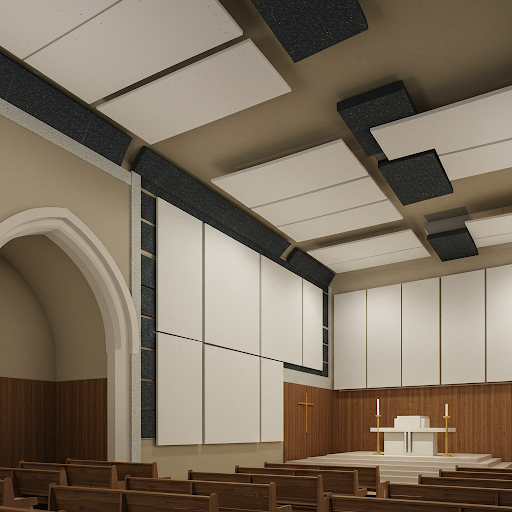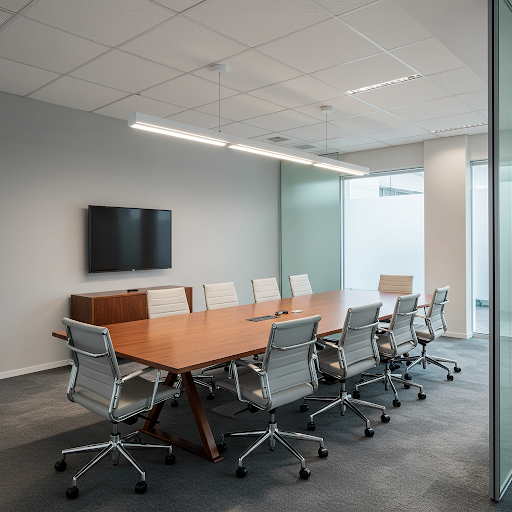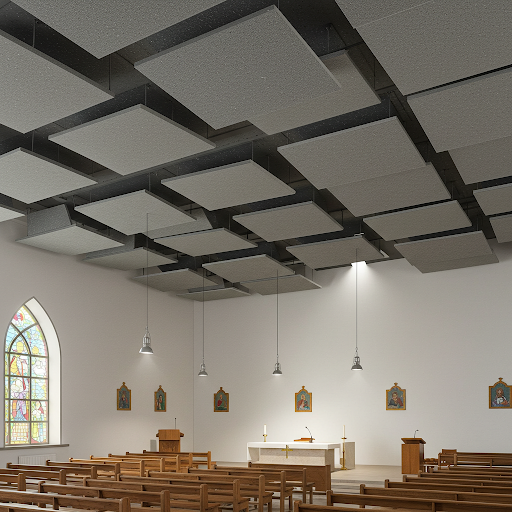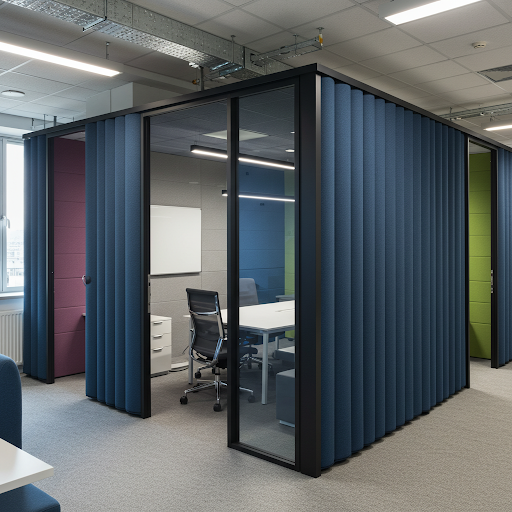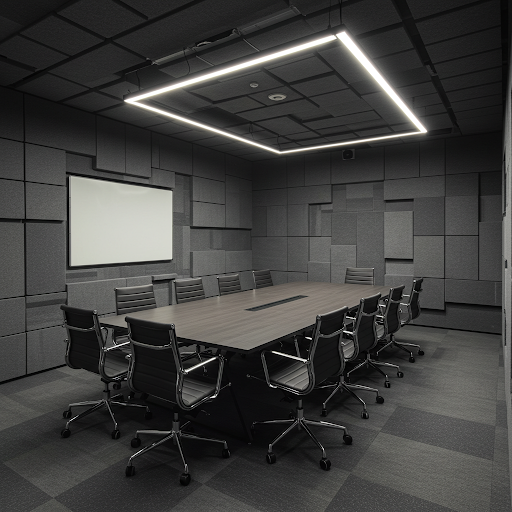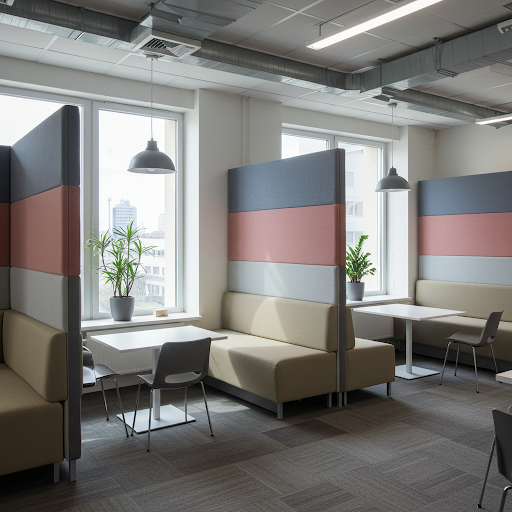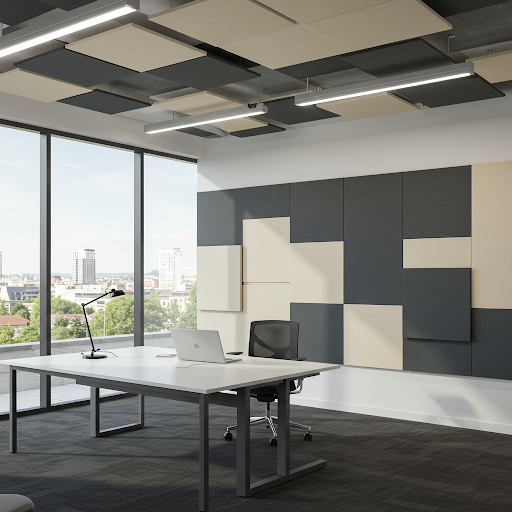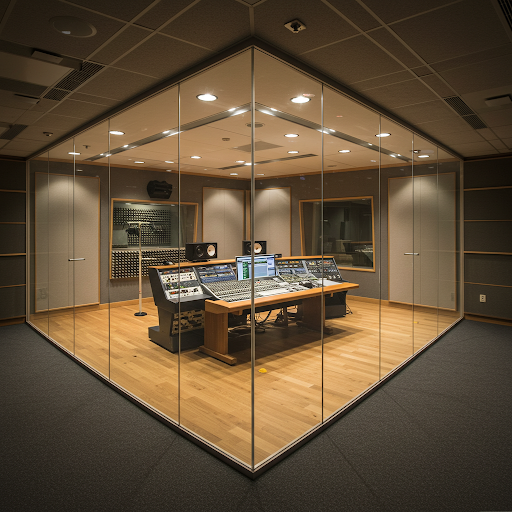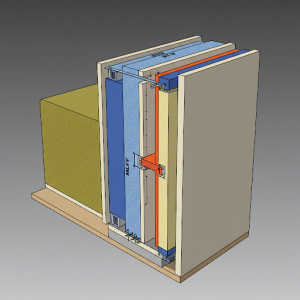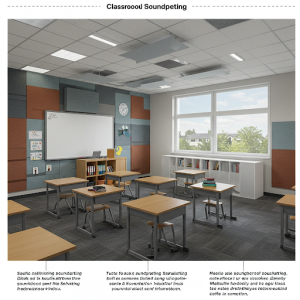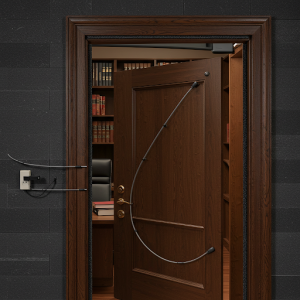Description
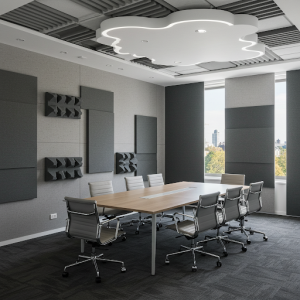
Achieving 100% room soundproofing is a very ambitious goal, and uncalled for. The extreme quiet can be disorienting. Our sense of balance and spatial awareness relies partly on auditory cues. While achieving absolute silence is practically impossible, there are rooms designed to minimize sound to an extreme degree. These are called anechoic chambers.

Anechoic chambers are specialized rooms designed to absorb virtually all sound reflections, creating an environment that simulates a “free field.” This means that sound waves travel outward without bouncing off surfaces, allowing for precise acoustic measurements and research.
Significant sound reduction is achievable for a multitude of purposes, such as enhancing a meeting room’s comfort, privacy, and overall well-being.
Soundproofing is valuable in a variety of rooms where controlling noise levels is crucial for comfort, productivity, or specific activities. Primarily, rooms designed for audio-related purposes significantly benefit. Recording studios, home theaters, and music practice rooms demand high levels of sound isolation to prevent external noise interference and to contain internal sound.
Additionally, spaces where privacy is paramount also require soundproofing. Doctor’s offices, therapy rooms, and legal consultation rooms rely on soundproofing to ensure confidential conversations remain private. Furthermore, in residential settings, bedrooms, especially those located near busy streets or shared walls, can greatly benefit from soundproofing to create a peaceful sleeping environment.
Office spaces, particularly those with open floor plans, often require soundproofing to minimize distractions and improve focus. Conference rooms where important meetings take place also need soundproofing to ensure clear communication. Finally, any room where loud equipment is used, such as a workshop or a gym, may require soundproofing to reduce noise pollution and create a more comfortable environment.
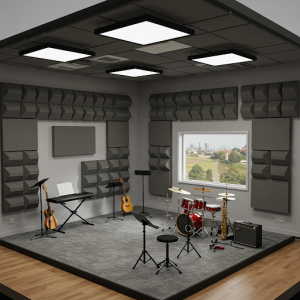
Here’s a breakdown of the key considerations and steps involved, along with the importance of supporting services like air conditioning:
Understanding Room Soundproofing vs. Sound Absorption
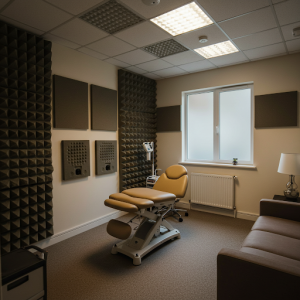
Soundproofing, or sound isolation, is the process of preventing sound from transmitting between spaces. It’s a crucial element in creating environments where noise control is essential. Unlike sound absorption, which aims to improve the quality of sound within a room, soundproofing focuses on blocking sound waves entirely.
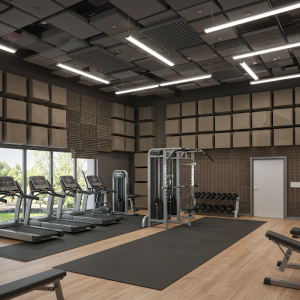
Here’s a breakdown of the key aspects:
Blocking Room Sound Transmission

The fundamental principle of soundproofing revolves around minimizing sound transmission, effectively preventing sound from entering or leaving a designated space. This objective is achieved by constructing barriers that obstruct the movement of sound waves. Unlike sound absorption, which focuses on managing sound within a room, soundproofing deals with external sound intrusion or containment.
The creation of these barriers involves strategic material selection and construction techniques. Dense, heavy materials are paramount, as they possess the inertia necessary to resist sound wave propagation. Examples include mass-loaded vinyl, concrete, and multiple layers of drywall. These materials work by forcing sound waves to expend energy attempting to pass through them.
Additionally, soundproofing addresses all potential sound pathways.
This includes not only walls, floors, and ceilings but also any gaps or cracks that can act as sound leaks. Effective soundproofing requires a comprehensive approach, sealing these gaps with acoustic caulk or specialized sealants. The sound transmission class (STC) rating is used to quantify the effectiveness of these barriers. A higher STC rating indicates a greater ability to block sound transmission. Therefore, the core of soundproofing lies in the meticulous construction of barriers that impede sound waves, ensuring a quieter and more controlled acoustic environment.
Room Soundproofing Utilizing Dense Materials

The cornerstone of effective soundproofing lies in the strategic application of dense, heavy materials. These materials, including mass-loaded vinyl, concrete, and multiple layers of drywall, are integral to constructing barriers that impede sound wave transmission. The mass they provide is crucial in blocking sound energy, as sound waves struggle to propagate through these substantial obstacles.
The underlying principle is that sound waves dissipate energy as they attempt to traverse dense barriers. The heavier and denser the material, the more energy the sound waves lose, resulting in a significant reduction in sound transmission. This energy loss occurs due to the inertia of the dense material, which resists the vibrations caused by sound waves.
Mass-loaded vinyl, for instance, is a flexible yet heavy material that adds significant mass to walls and ceilings, effectively blocking airborne sound. Concrete, known for its density, is exceptionally effective in soundproofing, particularly in structural applications. Multiple layers of drywall, especially when combined with a damping compound, create a layered barrier that further impedes sound transmission.
The effectiveness of these materials is further enhanced by proper installation techniques. Sealing gaps and ensuring continuous barriers are essential to prevent flanking noise, which travels through structural elements. Therefore, the use of dense, heavy materials is fundamental in soundproofing, as they provide the mass necessary to dissipate sound energy and create a quieter environment.
Addressing Room Sound Pathways

Achieving optimal soundproofing necessitates a comprehensive approach that addresses all potential sound pathways. Sound waves, unlike light, can propagate through various structural elements, including walls, floors, and ceilings. Moreover, even seemingly insignificant gaps and cracks can act as conduits for sound transmission, undermining the effectiveness of soundproofing efforts.
Therefore, a successful soundproofing strategy must meticulously identify and address every possible route for sound to travel. This involves not only constructing barriers with dense materials but also ensuring the continuity of these barriers. Walls, floors, and ceilings must be treated as a unified system, with no weak points that allow sound to leak through.
Particular attention must be paid to sealing any gaps or cracks. These seemingly minor imperfections can significantly compromise sound isolation. Acoustic caulk, specialized sealants, and weatherstripping are essential tools for closing these gaps, preventing sound from flanking around the primary soundproofing materials.
Furthermore, sound can travel through structural elements, such as studs and joists, a phenomenon known as flanking noise.
Addressing this requires decoupling structural elements or using resilient channels to minimize vibration transfer. Consequently, optimal soundproofing necessitates a holistic approach, addressing all potential sound pathways, including gaps, cracks, and structural elements, to create a truly isolated environment.
Sound Transmission Class (STC)

The Sound Transmission Class (STC) rating is a crucial metric for understanding soundproofing effectiveness. Because it provides a standardized way to quantify a building partition’s ability to impede airborne sound. This numerical rating simplifies the complex science of sound transmission into a single, easily understandable value.
Specifically, STC measures the reduction of sound, in decibels, that a wall, floor, or ceiling provides. A higher STC rating translates to superior sound insulation, meaning the partition blocks more sound. For instance, a wall with an STC rating of 50 will block significantly more sound than a wall with an STC rating of 30. This rating is crucial for architects, builders, and designers when selecting materials and construction methods to achieve desired sound isolation levels in various environments.
Sound Absorption
When discussing acoustics, it’s crucial to distinguish between soundproofing and sound absorption.
Sound absorption focuses on refining the acoustic environment within a space. Its goal is to minimize unwanted sound reflections, echoes, and reverberation. By doing so, it creates a clearer and more controlled sound field. This improvement significantly enhances speech intelligibility and overall audio quality. Instead of blocking sound transmission, as soundproofing does, sound absorption manages the sound already present in the room. This is crucial for spaces where sound clarity is essential, such as conference rooms, classrooms, and recording studios, where clear audio is paramount for effective communication and optimal listening experiences.
Room Soundproofing Utilizing Porous Materials
Sound absorption utilizes soft, porous materials, such as acoustic foam, fabric-wrapped panels, and fiberglass, to manage sound within a space. These materials function by converting sound energy into heat. As sound waves penetrate their porous structure, friction occurs, causing the sound energy to dissipate. This process effectively reduces the amount of sound energy reflected into the room.
By preventing sound waves from bouncing off hard surfaces like walls and ceilings, these materials minimize echoes and reverberation.
This creates a more controlled and balanced acoustic environment, enhancing clarity and intelligibility. This is particularly valuable in spaces where sound quality is critical, such as recording studios, theaters, and conference rooms. The effectiveness of these materials is quantified by the Noise Reduction Coefficient (NRC).
Improving a Room’s Sound Quality
The Noise Reduction Coefficient (NRC) quantifies a material’s sound absorption capabilities. A higher NRC rating signifies that the material absorbs a greater proportion of sound energy. This NRC metric is crucial for selecting appropriate materials to control reverberation and improve acoustic quality within a space.
Key Room Soundproofing Techniques
Room Walls Soundproofing
Soundproofing room walls requires a comprehensive strategy to effectively impede sound transmission. The foundation of this strategy is mass, which is typically increased by adding layers of drywall. Sound-rated drywall is particularly effective due to its enhanced density and damping properties.
Decoupling is another crucial technique, involving the physical separation of wall layers. This is achieved using resilient channels or sound isolation clips, which minimize the transfer of vibrations through the wall structure. These methods disrupt the direct pathway for sound waves, significantly reducing sound transmission.
Damping involves the application of a damping compound, like Green Glue, between drywall layers. This compound converts sound energy into heat, further dissipating sound waves and minimizing their propagation.
Finally, insulation plays a vital role. Filling wall cavities with dense insulation materials, such as mineral wool, absorbs sound waves within the wall structure. These materials prevent sound from resonating within the wall cavity, enhancing overall sound isolation.
By combining mass, decoupling, damping, and insulation, a robust barrier is created, effectively minimizing airborne noise transfer between spaces. This multi-layered approach is essential for achieving optimal soundproofing in environments where noise control is critical.
Room Floor Soundproofing
Soundproofing floors involves addressing both impact noise, caused by footsteps or dropped objects, and airborne noise. Effective strategies include underlayment, floating floors, and carpeting.
Underlayment, installed beneath flooring, significantly reduces impact noise.
Materials like cork or rubber possess excellent sound-dampening properties, absorbing and dissipating impact energy. This prevents vibrations from traveling through the floor structure and into adjacent rooms.
Floating floors, a more advanced technique, involve creating a floor that is decoupled from the subfloor. This separation minimizes vibration transmission, as the flooring is not directly connected to the building’s structure. This method is particularly effective for reducing both impact and airborne noise.
Carpeting, especially thick carpets with dense padding, provides a simple yet effective solution. The soft, porous nature of carpets absorbs sound waves, reducing both impact noise and airborne noise. The denser the padding, the greater the sound absorption.
These techniques, individually or combined, significantly reduce floor-related noise transmission. Therefore, selecting the correct strategy is vital for a good soundproofing result.
Ceilings Soundproofing
Ceiling soundproofing closely mirrors wall techniques. Adding mass, decoupling, and damping are key. Mass, through extra drywall layers, blocks sound. Decoupling, using resilient channels, isolates the ceiling from the structure, minimizing vibration.
Damping compounds, like Green Glue, absorb sound energy. Additionally, suspended ceilings with acoustic tiles provide effective sound absorption and isolation, reducing both airborne and impact noise. 3 These combined methods create a robust barrier, significantly minimizing sound transmission between floors, contributing to a quieter environment.
Windows Soundproofing
When addressing window soundproofing, several methods can significantly reduce noise intrusion. Upgrading to double or even triple-glazed windows is a highly effective approach, as the increased layers of glass and the air gap between them disrupt sound wave transmission. However, even the best windows will fail to perform optimally if gaps exist. Therefore, meticulously sealing any openings around the window frame with acoustic sealant, a specialized caulk designed to dampen sound vibrations, is crucial. Additionally, incorporating heavy, sound-dampening curtains made from thick, dense fabrics can further absorb and minimize incoming noise. These curtains act as a barrier, particularly effective against higher-frequency sounds. Combining these techniques creates a multi-layered defense against unwanted noise, enhancing the overall soundproofing of a room.
Door Soundproofing
Sealing Gaps

Any small gaps or cracks can allow sound to leak through. Pay close attention to electrical outlets, pipes, and other penetrations.
Supporting Services
Room Air Conditioning
Soundproofing often creates an airtight environment, posing challenges for ventilation and heat buildup. Therefore, a dedicated, quiet HVAC system is crucial. Standard systems can introduce noise, so careful selection is vital. Ductwork must be meticulously insulated to minimize noise transmission, preventing sound from traveling through the ventilation system itself. This ensures proper airflow without compromising the room’s sound isolation. Integrating a well-planned HVAC system is essential for maintaining a comfortable and acoustically controlled environment.
Ventilation

Adequate ventilation becomes a critical consideration when creating a tightly sealed, soundproofed room. Sealing a room to block sound also restricts airflow, which can lead to poor air quality and discomfort. Therefore, integrating a proper ventilation system is essential. However, standard ventilation systems can compromise soundproofing efforts, as they create pathways for sound to travel. To address this, it’s crucial to consider using sound-attenuated ventilation systems.
These specialized systems are designed to minimize noise transmission while providing necessary airflow. They often incorporate features like:
Sound-absorbing linings
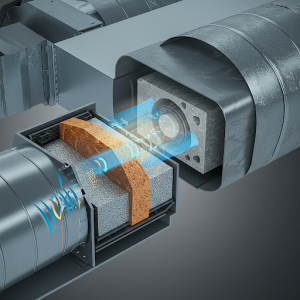
These linings within the ductwork help to dampen sound waves.
Duct silencers
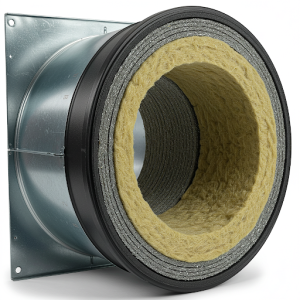
These components are designed to reduce the noise generated by air movement through the ducts.
Flexible ducting
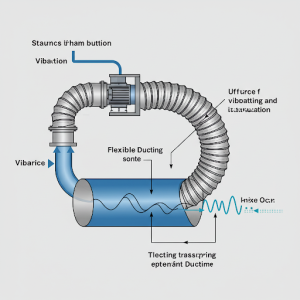
Using flexible ducting can help reduce vibrations that transmit sound.
Sound mazes

These are internal baffles inside the ductwork that force sound waves to travel through a maze, greatly reducing the sound level.
By implementing these features, sound-attenuated ventilation systems ensure that the room remains both quiet and well-ventilated. This is especially important in environments like recording studios, home theaters, and any space where prolonged occupancy is expected. Therefore, carefully planning and integrating a suitable ventilation system is a vital part of any successful soundproofing project.
Important Considerations in Room Soundproofing
When embarking on a soundproofing project, several crucial considerations must be addressed. First and foremost, the complexity of soundproofing often necessitates professional assistance. Especially for applications demanding high levels of sound isolation, such as recording studios or home theaters, expert knowledge is invaluable. Wallpaper Kenya can accurately assess the room’s acoustics, recommend appropriate materials, and ensure proper installation, minimizing sound leaks.
Secondly, soundproofing can be a significant investment. The cost of materials, such as mass-loaded vinyl, specialized drywall, and acoustic sealants, can quickly add up. Furthermore, labor costs for professional installation must be factored into the budget. It’s essential to obtain accurate cost estimates and prioritize soundproofing efforts based on budget constraints.
Lastly, it’s vital to maintain realistic expectations. Achieving complete sound isolation is exceptionally challenging. Even with the most advanced materials and techniques, some sound transmission is likely to occur. Soundproofing aims to significantly reduce noise levels, not eliminate them.
Factors like flanking noise, which travels through structural elements, can be difficult to address completely. Understanding these limitations is crucial for setting realistic goals and avoiding disappointment. A professional can help set those expectations.

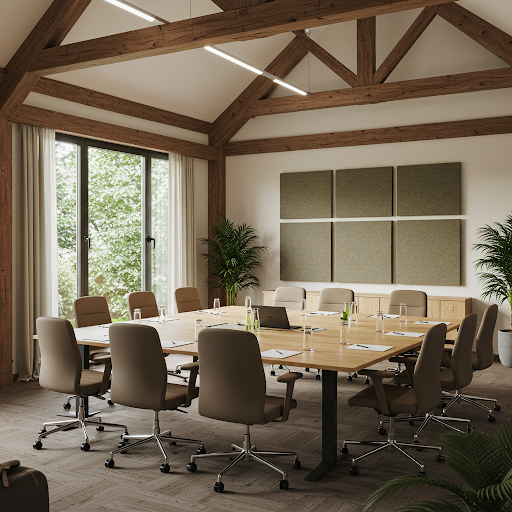
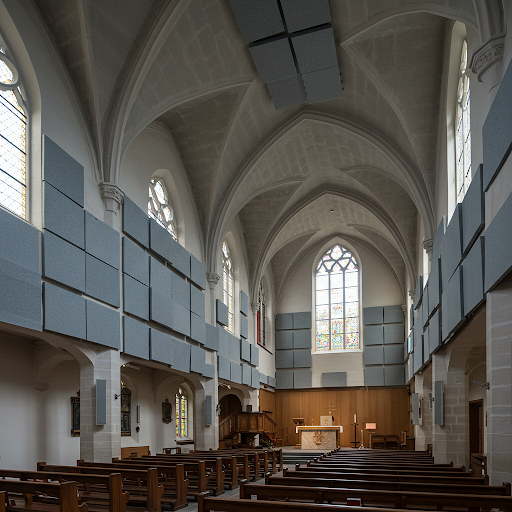
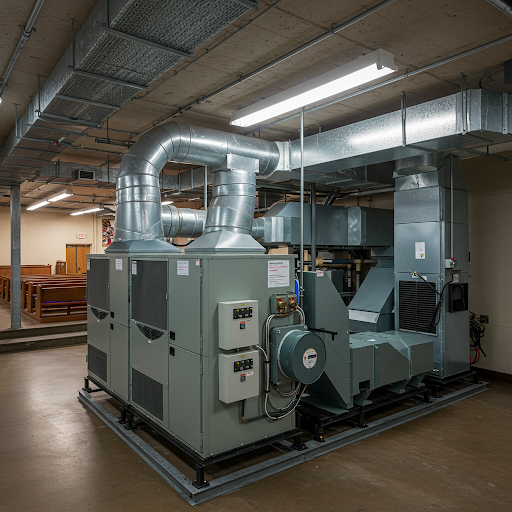
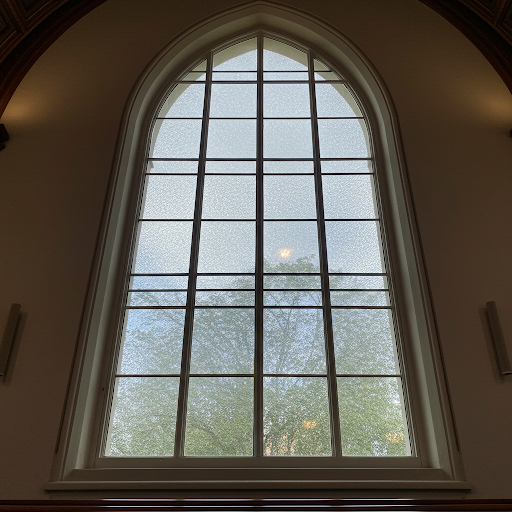
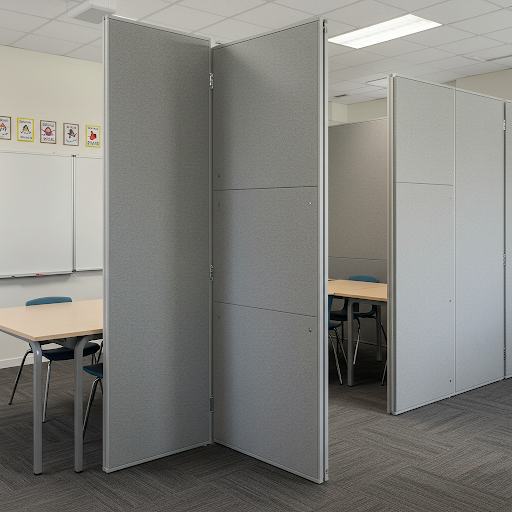


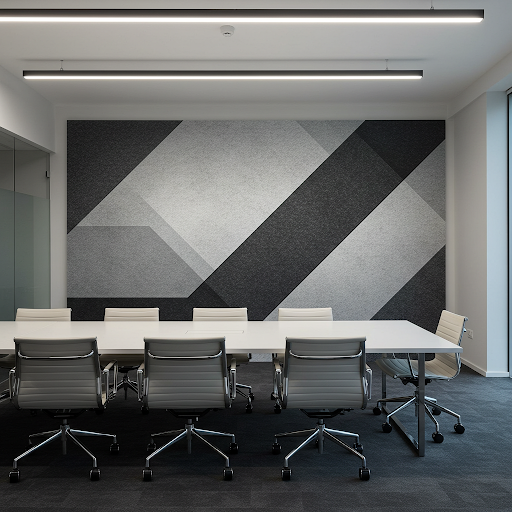
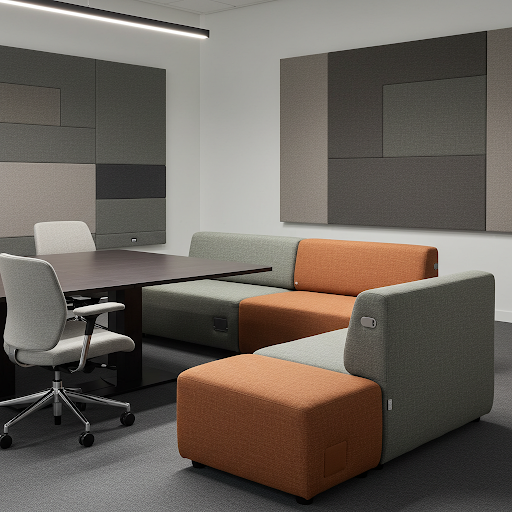
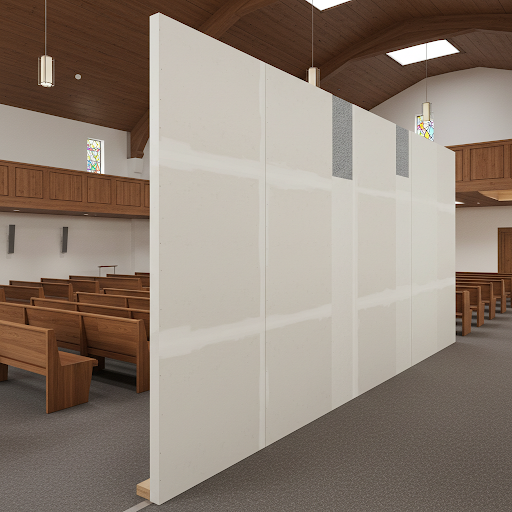
![Soundproof-drywall-used-in-a-church-in-conjunction-with-other-soundproofing-materials-such-as-Mass-Loaded-Vinyl-MLV[1] https://interiordesign.co.ke/wp-content/uploads/2025/03/Soundproof-drywall-used-in-a-church-in-conjunction-with-other-soundproofing-materials-such-as-Mass-Loaded-Vinyl-MLV.png](https://interiordesign.co.ke/wp-content/uploads/2025/03/Soundproof-drywall-used-in-a-church-in-conjunction-with-other-soundproofing-materials-such-as-Mass-Loaded-Vinyl-MLV1.png)
